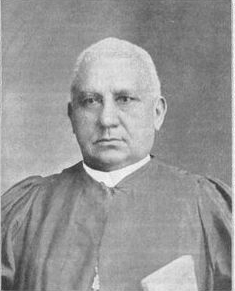The Klu Klux Klan was a white supremacies group that arose during the time of the civil war. They were very extreme and often times lynched black men and women from trees or burned there homes. It was an extremely popular group in the 1860s and 70s and was estimated to have around 500,000 members at the time. They often wore long white robes and hoods to look terrifying and to hide there identities. The group also claims to be very Christian centered although, some of there ceremonies resemble more of a cult style group. Also the Klan sometimes references themselves as savior nights.
The Klu Klux Klan Emblem
The Klu Klux Klan Emblem






